To get an estimate on a 4L60E, click Get a Free Estimate.
What Transmission Do I Have?

In This Guide
- Vehicle Compatibility – Makes & Models
- Transmission Overview
- 4L60E vs 4L65E
- Common Problems
- What’s Included
- Warranty
Replacement 4L60E Transmission Prices:
| Transmission | Street Smart Transmission |
|---|---|
| 4L60E / 4L65E | 2100 |
4L60E Applications and Compatibility:
4L60E Transmission Overview
 The 4L60E is an electronically controlled 4-speed automatic transmission that was derived from the 700R4.
The 4L60E is an electronically controlled 4-speed automatic transmission that was derived from the 700R4.
The name is derived from its specifications:
4-speed – Longitudinal – 6000 lb gross vehicle weight rating (GVWR) – Electronically controlled.
The basic specs are:
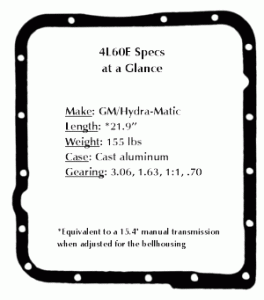 Weight – 146 lbs dry / 162 lbs wet. Fluid capacity – 8.4 quarts (9.64″ torque converter), 11.4 quarts (11.81″ torque converter). Versions with the deep pan or large cooling circuit require as much as 14 quarts.
Weight – 146 lbs dry / 162 lbs wet. Fluid capacity – 8.4 quarts (9.64″ torque converter), 11.4 quarts (11.81″ torque converter). Versions with the deep pan or large cooling circuit require as much as 14 quarts.
GM’s alternative designations of these transmissions are:
- 4L60E = M30
- 4L65E = M32
- 4L70E = M70
Instead of relying on hydraulic pressure to actuate gear changes, fuel efficiency and performance were improved by using a computer that could interpret data from speed sensors, and decide the most appropriate time to shift gears using a solenoid.
It was introduced by General Motors in 1993, and was used in a number of rear-wheel drive and 4WD V6 and V8 applications. Some of the models that used the 4L60E transmission include the Chevy S-10, the Chevrolet Silverado 1500/2500, the Chevrolet Suburban, the GMC Sierra 1500/2500, and the GMC Yukon.
The first variation was made from 1993–1997 and featured a one-piece case where the bellhousing was cast into the case itself. It had a thin metal or plastic dust cover on 2WD applications, and a more durable aluminum cover was fitted to 4WD units.
Having evolved from the hydraulically controlled 700R4 that was introduced back in 1982, the 4L60E 4-speed automatic transmission evolved quite a bit over its lifetime, including changes to the case size, detachable bellhousings, multiple solenoids, and more capable torque convertors.
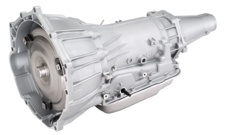 GM also created high-performance versions of the 4L60E transmission, which was used in such tire scorchers as the Chevrolet Corvette, the Chevrolet Impalla SS, the Chevy Camaro, the Pontiac Firebird, and the Australian-built Pontiac GTO. Over its lifespan, there were over 60 different variations of the transmission, broken into 3 generations.
GM also created high-performance versions of the 4L60E transmission, which was used in such tire scorchers as the Chevrolet Corvette, the Chevrolet Impalla SS, the Chevy Camaro, the Pontiac Firebird, and the Australian-built Pontiac GTO. Over its lifespan, there were over 60 different variations of the transmission, broken into 3 generations.
1996–1999 versions of the 4L60 transmission got new bolt-on bell housings, along with a stronger 6-bolt tail-housing. Later versions were lengthened to accommodate a stronger 300mm (11.81in) torque convertor and 300mm input shaft. This allowed it to handle the increased torque of the GM Gen III small-block V8.
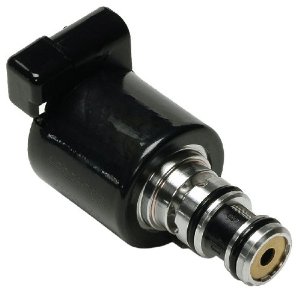 The 4L60E uses 2 shift solenoids, which the ECU uses to actuate gear changes. On early versions, they were called Shift Solenoid A & Shift Solenoid B, and the PCM could achieve 4 distinct gear ratios by turning them on & off in a pre-set pattern. In order to comply with OBDII regulations, they were changed to 1-2 Shift Solenoid & 2-3 Shift solenoid.
The 4L60E uses 2 shift solenoids, which the ECU uses to actuate gear changes. On early versions, they were called Shift Solenoid A & Shift Solenoid B, and the PCM could achieve 4 distinct gear ratios by turning them on & off in a pre-set pattern. In order to comply with OBDII regulations, they were changed to 1-2 Shift Solenoid & 2-3 Shift solenoid.
4L60E vs 4L65E
A heavy duty version of the 4L60E was introduced in 2001, and paired with the 6.0L Vortec V8. Known as the 4L65-E transmission, it was capable of handling 380 ft·lbf (515 N·m) of torque because of its stronger internal hardware. This included a new planetary gearset that had 5 pinion gears instead of four.
There was also a sturdier 7 plate clutch pack, along with a stronger input shaft assembly. Many of these improvements were incorporated into the transmission for the 2002 model year.
4L60E Diagnostic Trouble Codes | DTC
| Trouble Code | Description |
|---|---|
| P0706 | Transmission Range Sensor Circuit Range/Performance |
| P0711 | Transmission Fluid Temperature Sensor Circuit Range/Performance |
| P0712 | Transmission Fluid Temperature Sensor Circuit Low Input |
| P0713 | Transmission Fluid Temperature Sensor Circuit High Input |
| P0719 | Torque Converter/Brake Switch B Circuit Low |
| P0724 | Torque Converter/Brake Switch B Circuit High |
| P0740 | Torque Converter Clutch Circuit Malfunction |
| P0748 | Pressure Control Solenoid 'A' Electrical |
| P0751 | Shift Solenoid 'A' Performance or Stuck Off |
| P0753 | Shift Solenoid 'A' Electrical |
| P0756 | Shift Solenoid 'B' Performance or Stuck Off |
| P0757 | Shift Solenoid 'B' Stuck On |
| P0758 | Shift Solenoid 'B' Electrical |
| P0785 | Shift/Timing Solenoid |
| P0894 | Transmission Component Slipping |
| P1860 | TCC PWM Solenoid Circuit Electrical |
| P1870 | Transmission Component Slipping: GM Transmission |
4L60E Technical Service Bulletins | TSBs
TSB 01-07-30-002C – Transmission stuck in third gear with inoperable instrument cluster and multiple DTC’s – 4L60E Transmission & 4L65 Transmission
1999 – 2003 Cadillac Escalade – 2002 – 2003 Cadillac Escalade EXT – 2003 Cadillac Escalade ESV – 1997 – 2003 Chevrolet Silverado – 1997 – 2003 Chevrolet Suburban – 1997 – 2003 Chevrolet Tahoe – 1997 – 2003 Chevrolet Blazer – 1997 – 2003 Chevrolet Express – 1997 – 2003 Chevrolet S10 – 2002 – 2003 Chevrolet Avalanche – 2002 – 2003 Chevrolet Trailblazer – 2002 – 2003 Chevrolet Trailblazer EXT – 1997 – 2003 GMC Sierra – 1997 – 1999 GMC Suburban – 1999 – 2003 GMC Yukon XL – 1997 – 2003 GMC Yukon – 1997 – 2001 GMC Jimmy – 1997 – 2003 GMC Savanna – 1997 – 2003 GMC Sonoma – 2002 – 2003 GMC Envoy – 2002 – 2003 GMC Envoy XL – 1997 – 2003 Oldsmobile Bravada
Problem – Vehicles equipped with the 4L60E and 4L65E transmission may become stuck in third gear, the instrument cluster may not function, and the following DTC’s may be set: P0740, P0753, P0758, P0785 and P1860.
Solution – The most likely cause of this transmission problem is a blown fuse or an open on circuit 1020 between the fuse panel and the transmission. If no battery voltage is found at the fuse, the ignition switch will need to be replaced
TSB 01-07-30-023B – Harsh 1-2 upshift with P1870 DTC – 4L60E Transmission RPO M30
1996 Buick Roadmaster – 1996 Cadillac Fleetwood – 1999-2000 Cadillac Escalade – 1996-2000 Chevrolet Camaro – 1996-2000 Corvette – 1996-2000 Pontiac Firebird – 1996-2000 Chevrolet and GMC Light Duty Truck Models – 1996-2000 Oldsmobile Bravada
Problem – Drivers may experience an unusually harsh 1-2 shift because the ECU has commanded maximum line pressure in order to compensate for excessive wear in the bore that contains the TCC isolator and regulator valves inside of the valve body.
Solution – Replace the 4L60E valve body with revised TCC regulator and isolator valves.
TSB 01-07-30-038D – Poor transmission performance/slipping with P0757 DTC – 4L60E Transmission – 4L65E Transmission – 4L70E Transmission
2003-2007 HUMMER H2 – 2006-2007 HUMMER H3 – 2005-2007 Saab 9-7X
Problem – Drivers may experience the loss of 3rd and 4th gear, erratic shifting, slipping, freewheeling above 30 mph and a P0757 DTC.
Solution – In order to repair this transmission problem, the 2-3 shift valve, 2-3 shuttle valve, and the valve bore will need to be cleaned of any debris. The 2-4 band and/or 3-4 clutches may also need to be inspected and changed.
TSB 08-07-30-027 – No movements when transmission is shifted into Drive or third – 4L60E Transmission – 4L65E Transmission – 4L70E Transmission
1982-2005 GM Passenger Cars and Light Duty Trucks: 2006-2007 Buick Rainier – 2006 Cadillac Escalade, Escalade ESV & Escalade EXT – 2006 Chevrolet SSR – 2006-2008 Chevrolet Avalanche – 2006-2008 Chevrolet Colorado – 2006-2008 Chevrolet Express – 2006-2008 Chevrolet Silverado Classic – 2006-2008 Chevrolet Silverado – 2006-2008 Chevrolet Suburban – 2006-2008 Chevrolet Tahoe – 2006-2008 Chevrolet TrailBlazer – 2006 GMC Yukon Denali – 2006 GMC Yukon Denali XL – 2006-2008 GMC Canyon – 2006-2008 GMC Envoy – 2006-2008 GMC Savana – 2006-2008 GMC Sierra Classic – 2006-2008 GMC Sierra – 2006-2008 GMC Yukon – 2006-2008 GMC Yukon XL – 2006 Pontiac GTO – 2006-2007 HUMMER H2 – 2006-2008 HUMMER H3 – 2006-2008 Saab 9-7X – with the 4L60, 4L60E, 4L65E or 4L70E Automatic Transmission (RPOs MD8, M30, M32, M33 or M70)
Problem – It is possible to experience no movement when the transmission is shifted into Drive or the 3rd gear position. It is possible to experience normal operation when the transmission shifted into second, first or reverse.
Solution – Replace the forward sprag assembly
TSB 00-07-30-022D – No reverse, second or fourth gears – 4L60E Transmission & 4L65E Transmission
1993 – 2005 GM passenger cars and light duty trucks
Problem – Drivers may experience the loss of reverse, second and fourth gears. First and third gears will seem to function normally
Solution – The reaction sun gear may fail inside of the sun shell. It will need to be replaced with a stronger heat-treated 4L60E / 4L65 sun gear.
TSB 01-04-17-004B – Clunk, bump or squawk when vehicle comes to a stop, or when it is accelerating from a complete stop – 4WD/AWD vehicles with a one-piece propeller/drive shaft only
1999-2004 Cadillac Escalade, Escalade EXT, Escalade ESV – 1996-1999 Chevrolet 1500 Series Extended Cab Short Box Pickup (Old Style) – 1996-1999 Chevrolet 1500 Series Regular Cab Pickup and Utility Models (Old Style) – 1999-2002 Chevrolet Silverado Extended Cab Short Box (New Style) – 1999-2004 Chevrolet Silverado 1500 Series Regular Cab (New Style) – 2000-2004 Chevrolet 1500 Series Avalanche, Suburban and Tahoe – 2001-2004 Chevrolet Silverado 2500/3500 Series Regular Cab with Long Bed or Extended Cab (New Style) – 2001-2004 Chevrolet Silverado 2500 series crew cab, short box (New style) – 1996-1999 GMC 1500 series extended cab short box (Old style) – 1996-1999 GMC 1500 series regular cab pickup and utility models (Old Style) – 1999-2002 GMC Sierra extended cab short box (New style) – 1999-2004 GMC 1500 series Yukon, Yukon XL – 2000-2004 GMC Sierra 2500/3500 series regular cab with long bed or extended cab (New style) – 2001-2004 GMC Sierra 2500 Series Crew Cab, Short Box (New Style) – 2003-2005 HUMMER H2
Problem – In vehicles equipped with 4WD or AWD, drivers may experience a clunk, bump or squawk noise when they come to a stop, or when accelerating from a complete stop. This may occur during the 2-3 upshift or 3-2 downshift.
Solution – Replace the rear driveshaft slip yoke with a more robust nickel plated slip yoke.
TSB 06-07-30-007A – Harsh 1-2 shift with P0894 DTC – 4L60E Transmission | 4L65 Transmission | 4L70E Transmission
2006 Cadillac Escalade Models – 2006 Chevrolet Light Duty Trucks – 2006 Chevrolet Express Vans – 2006 GMC Light Duty Trucks – 2006 GMC Savana Vans – 2006 Pontiac GTO – 2006 HUMMER H2, H3 – 2006 Saab 9-7X – with 4L60-E / 4L65-E / 4L70-E (RPOs M30, M32, M70) Automatic Transmission
Problem – Drivers may experience an unusually harsh 1-2 shift with a P0894 DTC
Solution – Replace the TCC enable solenoid and/or wiring harness
TSB 08-07-30-008B – Diagnostic information for P0894 and P1870 DTC – 4L60E Transmission | 4L65 Transmission | 4L70E Transmission
2003-2007 GM Passenger Cars and Light Duty Trucks – 2003-2007 HUMMER H2 – 2006-2007 HUMMER H3 – 2005-2007 Saab 9-7X – with 4L60-E, 4L65-E or 4L70-E Automatic Transmission (RPOs M30, M32 or M70)
Problem – This relates to drivers who experience unusually harsh 1-2 shifts, along with a P0804 and/or a P1870 DTC.
Solution – It is possible that a leaking TCC solenoid, a torque converter clutch valve or damaged turbine shaft O-ring seal could cause these two diagnostic trouble codes. However, it could also be caused by a failed torque converter.
Common 4L60E Transmission Problems
One of the most common 4L60E transmission problems is the complete failure to engage reverse. There are many potential sources of this problem, which is ultimately brought on as the miles increase. The first culprit could be the low reverse clutch pack, where the disks are too worn out to engage reverse gear.
If this is the case, you will likely see metal shavings in the transmission fluid when you remove the transmission pan. Or the problem could be coming from the valve body, which could mean that warping occurred due to excessive heat, or the reverse circuit has failed.
Also, inspect the piston bore for scraping and score marks. This type of wear can lead to future reliability issues. So smooth out the bore with emery cloth, then remove the excess dust/debris with Brake Cleaner.
Harsh or Delayed 1–2 Shift
If your 4L60E transmission is pausing between first and second gear, it could be due to a worn or broken 2–4 transmission band. The steel 4L60E 2-4 transmission band is lined with a friction material that helps it to engage the clutch drum and execute the gear change.
As that material wears away, the band will slip on the drum and delay the shift, or cause it to slip between the two gears. This is a common problem on higher mileage vehicles.
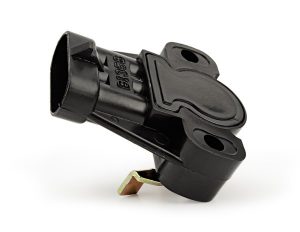 This issue can also be caused by a faulty Throttle Position Sensor/TPS. With the ignition in the ‘On’ position, you can test the 4L60E TPS using a voltmeter. If it is working, the voltage should increase/decrease in a smooth, linear line as you move the TPS. To find the correct voltage readings for your vehicle, refer to the shop manual.
This issue can also be caused by a faulty Throttle Position Sensor/TPS. With the ignition in the ‘On’ position, you can test the 4L60E TPS using a voltmeter. If it is working, the voltage should increase/decrease in a smooth, linear line as you move the TPS. To find the correct voltage readings for your vehicle, refer to the shop manual.
Shudder When Shifting From 1st to 2nd
Another common problem is when it either ‘slams’ into second gear, or doesn’t seem to want to shift into second and the engine just revs.
Take a look at the 1-2 accumulator. This little shock absorber-like device lives inside the valve body and dampens the excess fluid pressure that builds after a gear change. If the little plastic piston or the spring inside of it breaks, you’ll feel the fluid pressure buildup as the transmission sort of jerks itself into gear.
If left un-repaired, this problem will eventually cause serious damage to the clutches and clutch drum assembly.
Rebuilt vs Reman vs Used 4L60E
It’s a well-known fact that transmission repairs are the most expensive fix you’ll probably ever make to your vehicle. So obviously you need to get the most value for your money. A used transmission is out of the question, because you’re literally buying someone else’s problems. This leaves you with either a rebuilt transmission, or a remanufactured transmission.
Rebuilt 4L60E Transmission
In this scenario, you take your GM vehicle to a mechanic that would remove your existing transmission and rebuild it using a 4L60E master rebuild kit. These factory spec parts include new seals, springs, transmission bands, clutch discs, accumulators, and the other components. In most cases, you’ll get a lot of life out of a rebuilt transmission.
However, most mechanics and transmission shops don’t have the equipment to test for cracks in hard parts like clutch drums or warping in the valve body, which could lead to new problems down the road. Plus, those OE parts have inherent weaknesses, so they will wear out just as fast as they did before.
Remanufactured 4L60E Transmission
To get the most life from your vehicle, you should really consider a remanufactured transmission. These are built in a factory with state of the art testing equipment and stringent quality control processes. This ensures a uniform product that is as close to brand-new as you are going to get.
Most remanufactured 4L60Es receive component updates and upgrades to extend the service life. In addition, the warranty on a reman transmission is typically better than you would get from a rebuild shop.
4L60E Updates and Upgrades
In order to correct design flaws inherent to the 4L60E 4-speed automatic, many transmission remanufacturing companies will perform the following upgrades:
- High Energy 2-4 transmission band with improved friction material that enhances durability
- High Energy 3-4 clutch pack with additional 7th clutch disk for extended service life & torque capacity
- Sun Shells are replaced with an updated (see: stronger) design
- Fully remanufactured pump with upgraded line bore bushings (to eliminate the possibility of leaks, improve durability, ATF flow and pressure control)
Remanufactured valve body includes:
- New machined surfaces
- System correction and heavy-duty recalibration kit (reduces slippage and increases durability)
- Updated servos
- Oversized PR valves
- Upgraded 1-2 Accumulator Pistons with stronger heat-resistant aluminum pistons (instead of the weaker OE plastic pistons)
Remanufactured torque converter includes:
- Upgraded TCC control valve, TCC regulator valve, and Actuator Feed Valve (significantly improves service life over OE specification)
- Stator undergoes Tru-Flat stator qualification and machining process.
- Fully tested for concentricity, balance and leaks
- Dyno tested prior to shipment to ensure proper functionality and to break in new components
How to Buy a Remanufactured Transmission
1) Buying Locally
When you go to your local repair shop, they’ll order a remanufactured transmission, then mark up the price. So at the end of the day, you’ll be paying 15% to 30% more than the actual cost of the unit.
2) Buying Online
Buying a reman transmission through a company like Street Smart Transmission will save you a considerable amount of money because you pay the wholesale price (avoiding a repair shop’s 15% to 30% markup), they’ll ship the unit to the shop of your choice free of charge, and returning your old transmission is free as well. Then all you have to pay for is the labor to install the unit (usually $400 to $800), and you’re on your way.
How Does it Work?
To order a remanufactured transmission from a company like Street Smart Transmission, all you need to do is provide your vehicle’s VIN number, the mileage, and the address of the repair shop that you want it shipped to.
Financing
Replacing a transmission can be expensive, so Street Smart Transmission offers financing through PayPal. Depending on your credit, you’ll be able to order a new transmission, get back on the road, then pay for it over time. You may have to pay labor charges for the installation up front, but you won’t have to shell out for the transmission all at once.
Shipping Charge/Location
When it comes to shipping, a transmission is quite heavy. So you’re going to pay quite a bit of money, unless the reman transmission company offers free shipping. Street Smart offers free shipping to a business address, which is usually the repair shop that you’ve chosen to install the unit.
What is a Core Charge (Core Deposit)?
Every remanufactured transmission originally came from somebody else’s car. Therefore, they need your broken transmission in order to refurbish it for another customer.
Your old/damaged transmission is called a “core”, and many companies will collect a core charge (usually $500 to $1500), which will be refunded once they receive your old transmission. However, if the transmission case, or other key components are damaged beyond repair, you may not get all of your core charge back. Make sure to ask for the core return policy, so you’ll know what to expect.
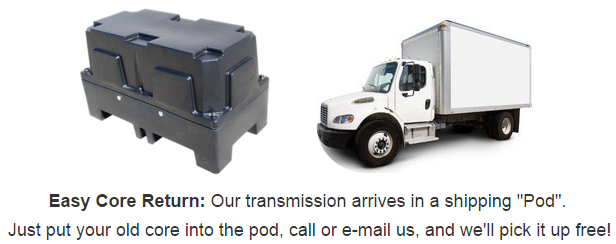
Our Recommendation
We recommend Street Smart Transmission. Their transmissions carry a 3 year / unlimited miles warranty that covers both parts and labor. Their warranty is nationwide and attached to the VIN so it is transferable with ownership if you decide to sell the vehicle. It also covers both parts and labor for the installation of the replacement transmission.
Watch the Remanufacturing Process
How it Works
Finding a Shop to Install the Remanufactured Transmission
If your transmission has failed, you’re going to need a skilled mechanic to replace it. You can find a shop using our shop locator map.
For warranty purposes, you need to find a reliable repair shop. That way, if the replacement transmission doesn’t work properly, the warranty will cover it.
Warranty
Each step in the remanufacturing process has to be verified by quality control managers before the build can continue. This guarantees uniform, properly functioning transmissions that will exceed the original manufacturer’s specifications. It also allows for a generous warranty that will protect you from transmission repair costs for up to three years.
- Standard coverage: 3 Years / Unlimited Mileage
- Commercial applications: 18 Months / 100,000 Miles
- Warranty is attached to the VIN number and can be transferred if the vehicle is sold
- Coverage is good at any licensed repair shop, anywhere in the United States
- Pays for parts & labor
- Replacement transmission will be shipped immediately upon receipt of a claim
In addition to the exceptional warranty coverage, every transmission is shipped to any business address for free, and core returns are shipped free as well. Between the build quality and the warranty, a our transmissions are literally better than new.
Ready to Replace Your Transmission?
Click Get a Free Estimate for an unbeatable price on a replacement remanufactured transmission.


stuck in lip mode no shift
I put a used trans in my gmc sierra did good for two days now it will go down the road jus a lil then loses every gear
Pas de 3 ni 4 vitesses sur mon chevrolet avalanche 2006
no 3rd or 4th gear in my 2002 chevy suburban 4wd
Motor dies when I put in any gear 4L60E